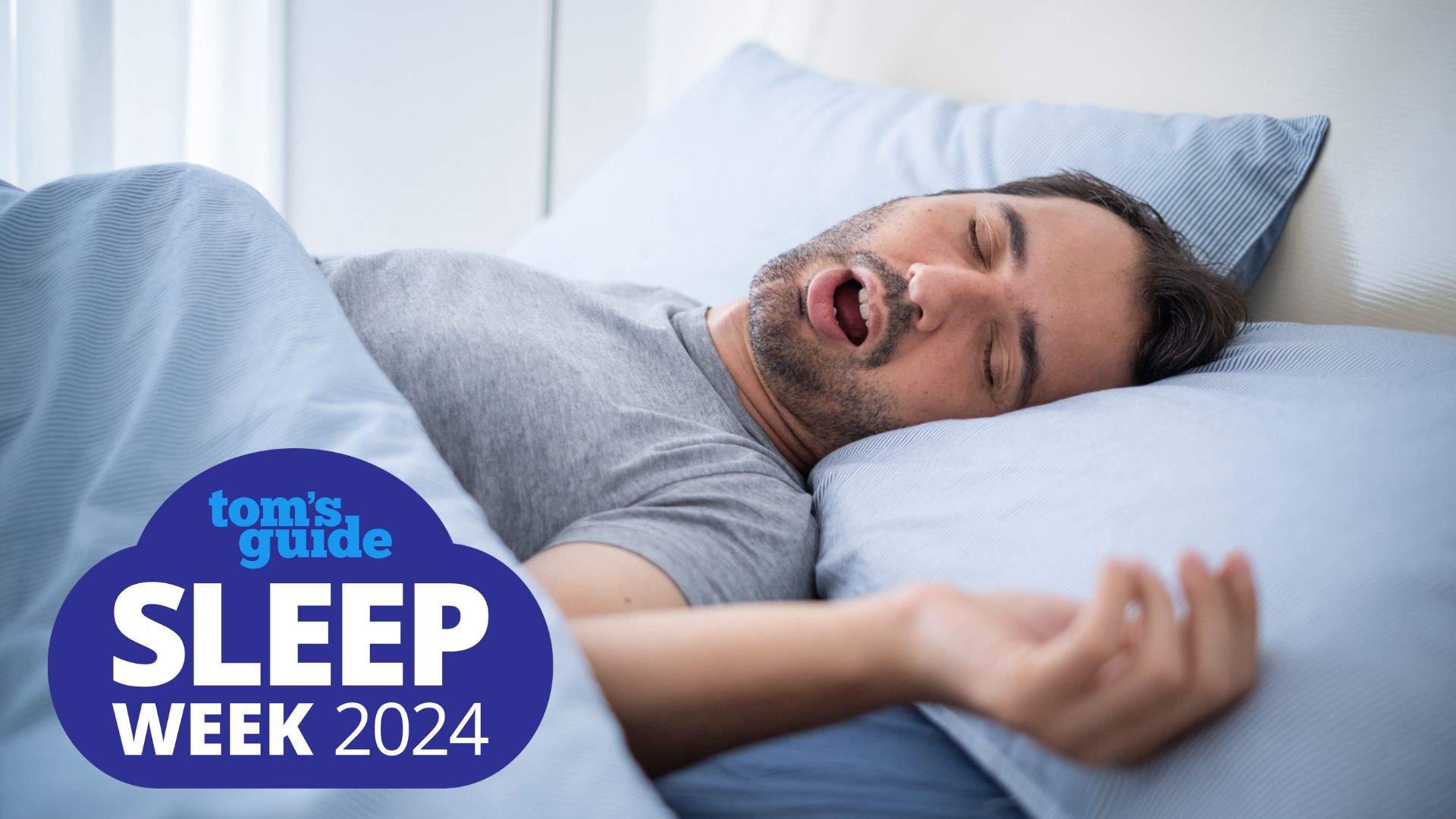
Sleep apnea is a common but serious sleep disorder characterized by breathing interruptions during sleep. Breathing briefly stops, before restarting again. As this occurs during our sleep, it can be hard to detect it’s even happening. So how do you know if you have sleep apnea?
To coincide with Sleep Awareness Week 2024, we put that question to Professor Esther Rodriguez-Villegas, the founder of Acurable, which creates wearable medical devices designed to detect sleep apnea.
There are two types of sleep apnea: Obstructive Sleep Apnea and Central Sleep Apnea. “Patients with either form of sleep apnoea often have the following symptoms: waking up tired and with a headache, difficulty concentrating, mood swings, and gasping for breath during their sleep,” professor Rodriguez-Villegas.
Sleep apnea affects an estimated 25 million adults in the US. If left untreated, sleep apnea can leave sufferers at an increased risk of developing diabetes and cardiovascular problems, including high blood pressure stroke. Here, we’ll walk you through what sleep apnea is, how to tell if you have it, and what your next steps should be.
What is sleep apnea?
According to the CDC, sleep apnea is a sleep disorder that causes you to briefly stop breathing while sleeping and affects approximately 25 million adults in the US and 1.5 million adults in the UK. There are two different types of sleep apnea: Central Sleep Apnea and, more commonly, Obstructive Sleep Apnea.
Obstructive Sleep Apnea (OAS):
“Obstructive Sleep Apnoea is when a blockage in the airflow results in pauses in breathing,” explains professor Rodriguez-Villegas. “This is usually caused by the throat muscles relaxing during sleep and blocking the airway.”
Harvard Health explains that Obstructive Sleep Apnea occurs when the throat muscles relax during sleep, causing airways to become slightly or completely blocked. Once oxygen levels drop low enough, the brain sends signals to the body to wake up, which is when the OAS sufferer begins to breathe again.

Central Sleep Apnea (CSA):
“Central Sleep Apnoea is less common and is characterized by a lack of drive to breathe whilst the patient is asleep,” she says. “That is, the brain briefly fails to send the necessary signals to the muscles that control breathing.”
What are the common symptoms of sleep apnea?
Sleep apnea is characterized by periods of interrupted breath, during which you stop and start breathing again. This can cause the following symptoms:
- Nighttime awakenings
- Loud snoring
- Gasping and choking for breath
- Waking with a headache
- Feeling lethargic despite sleeping for an adequate amount of time
- Irritability and low mood
- Daytime tiredness
- Restless legs
Risk factors of developing sleep apnea
Sleep apnea can affect anyone, including children. However, there are certain factors that can elevate your risk of developing sleep apnea. In obstructive sleep apnea, they include:
- Obesity
- Facial deformities
- Excessively large tonsils or adenoids
- Smoking
- Opioid use
- Drinking alcohol
- Advancing age
- Being female
“Obesity and age are key risk factors for obstructive sleep apnoea,” explains professor Rodriguez-Villegas. “The additional weight on the neck seen in obesity and the tissue structure changes that occur through aging can impact the ability of the throat to remain open at night.”
Statistically, women are also more likely than men to develop sleep apnea, with the Society of Women’s Health Research estimating that as many as 1 in 5 women suffer from Obstructive Sleep Apnea, but 9 out of 10 sufferers are unaware that they have it.
In Central Sleep Apnea, professor Rodriguez-Villegas explains that it is common in patients who have suffered from a stroke or congestive heart failure. However, it can also occur when sleeping at high altitudes.
How do I know if I have sleep apnea?
Both types of sleep apnea are characterized by breathing interruptions during your sleep, or periods of shallow breathing. But as these breathing interruptions occur when you are sleeping, it can be difficult to detect that they are even happening.
However, there are signs that you have sleep apnea that shouldn’t be ignored. They include loud snoring, periods of not breathing before gasping for breath, which is usually reported by another person. There are also other indicators that you may have sleep apnea, such as waking with a headache and feeling lethargic despite clocking up an adequate amount of sleep, along with the cognitive fogginess that comes with sleep deprivation.

An estimated 1 in 50 adults (and 9 out of 10 women) have undiagnosed sleep apnea. Without treatment, sleep apnea can leave you at a heightened risk of heart disease, stroke and high blood pressure, as well as contracting type 2 diabetes. As such, it’s essential that anyone who suspects that they have sleep apnea seeks a diagnosis.
“Anyone who believes they may have sleep apnoea should seek medical advice from their healthcare practitioner, who will likely refer them for an overnight sleep test either at home or in the hospital,” concludes professor Rodriguez-Villegas.
How is sleep apnea treated?
Sleeping on your side, losing weight and reducing alcohol intake are all shown to improve sleep apnea symptoms, as each reduces that chance of the throat collapsing under the weight of the neck. However, these should be used in tandem with treatment from your doctor.
"Common treatments for Obstructive Sleep Apnoea include mouth guards, removal of tonsils or adenoids, weight loss, and continuous positive airway pressure (CPAP) therapy," explains professor Rodriguez-Villegas, who notes that treatment of Central Sleep Apnea can be more complex. "Strategies that have been tested include hypnotic therapy, respiratory stimulants, oxygen therapy, positive airway pressure (PAP) and a few others."







